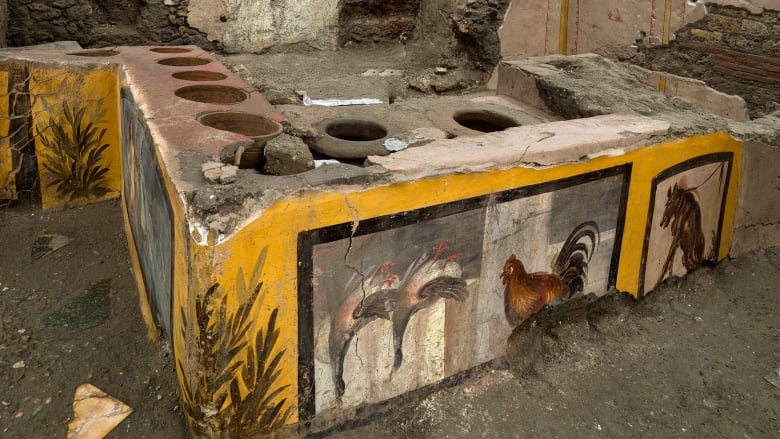
Archaeologists Discover That There Were “Fast Food” Joints in Ancient Rome
Travel across the country, or even across the world, and you will find McDonald’s, Burger King, Dunkin’ Donuts, or an endless number of your other favorite fast-food restaurants. But, as ubiquitous as fast-food joints are, believe it or not, they are not unique to modern times. In fact, archaeologists may have recently uncovered the “Micky D’s” of the ancient world.
It seems that a fast-food eatery at Pompeii has been excavated, helping to reveal dishes that were popular for the citizens of the ancient Roman city who were partial to eating out. Pompeii Archaeological Park’s longtime chief, Massimo Osanna, said earlier this month that while some 80 such fast-foods have been found at Pompeii, this latest find was the first time such a hot-food-drink eatery — known as a thermopolium — was completely unearthed.
A segment of the fast-food counter was partially dug up in 2019 during work to shore up Pompeii’s oft-crumbling ruins. Since then, archaeologists kept digging, revealing a multi-sided-counter with typical wide holes inserted into its top. The countertop held deep vessels for hot foods, not unlike soup containers nestled into modern-day salad bars.
Plant and animal specialists are still analyzing remains from the site, with its counter frescoed with a figure of an undersea nymph astride a horse. Images of two upside-down mallards and a rooster, whose plumage was painted with the typical vivid color known as Pompeiian red, also brightened the eatery and likely served to advertise the menu – not unlike the famed bright red and yellow of the famed “Golden Arches.”
Another fresco depicted a dog on a leash, similar to modern reminders to leash pets. Also, as you may find adorning the exterior walls of many modern fast-food joints, vulgar graffiti were inscribed on the painting’s frame.
Valeria Amoretti, a Pompeii staff anthropologist, said, “initial analyses confirm how the painted images represent, at least in part, the foods and beverages effectively sold inside.” Her statement noted that duck bone fragments were found in one of the containers, along with remains from goats, pigs, fish, and snails. At the bottom of a wine container were traces of ground fava beans, which in ancient times were added to wine for flavor and to lighten its color, Amoretti said.
While the find seems remarkably similar to today’s modern fast-food restaurants, the archaeological team did not say if they had unearthed a “drive-thru” for chariots.

Recent Comments